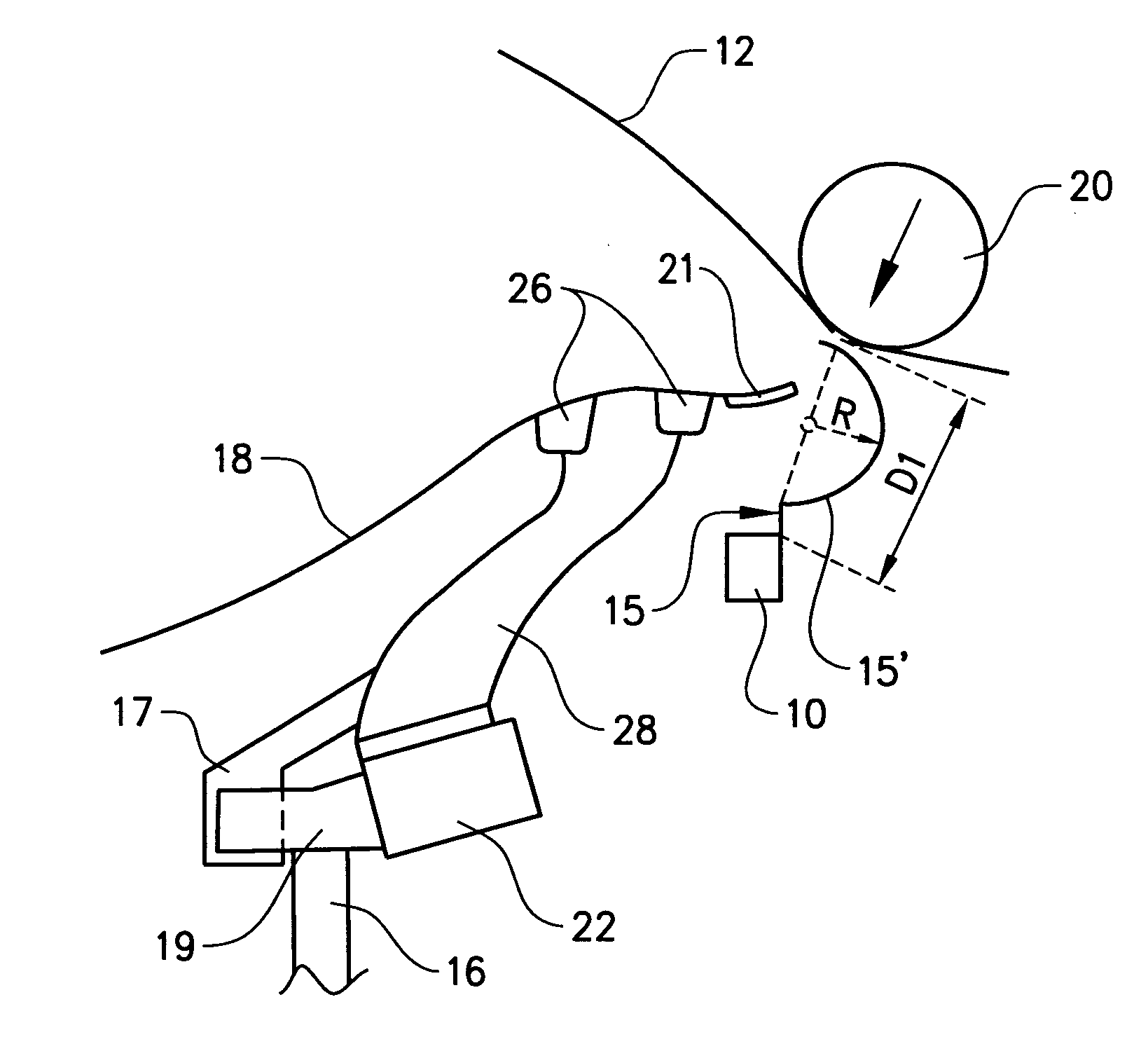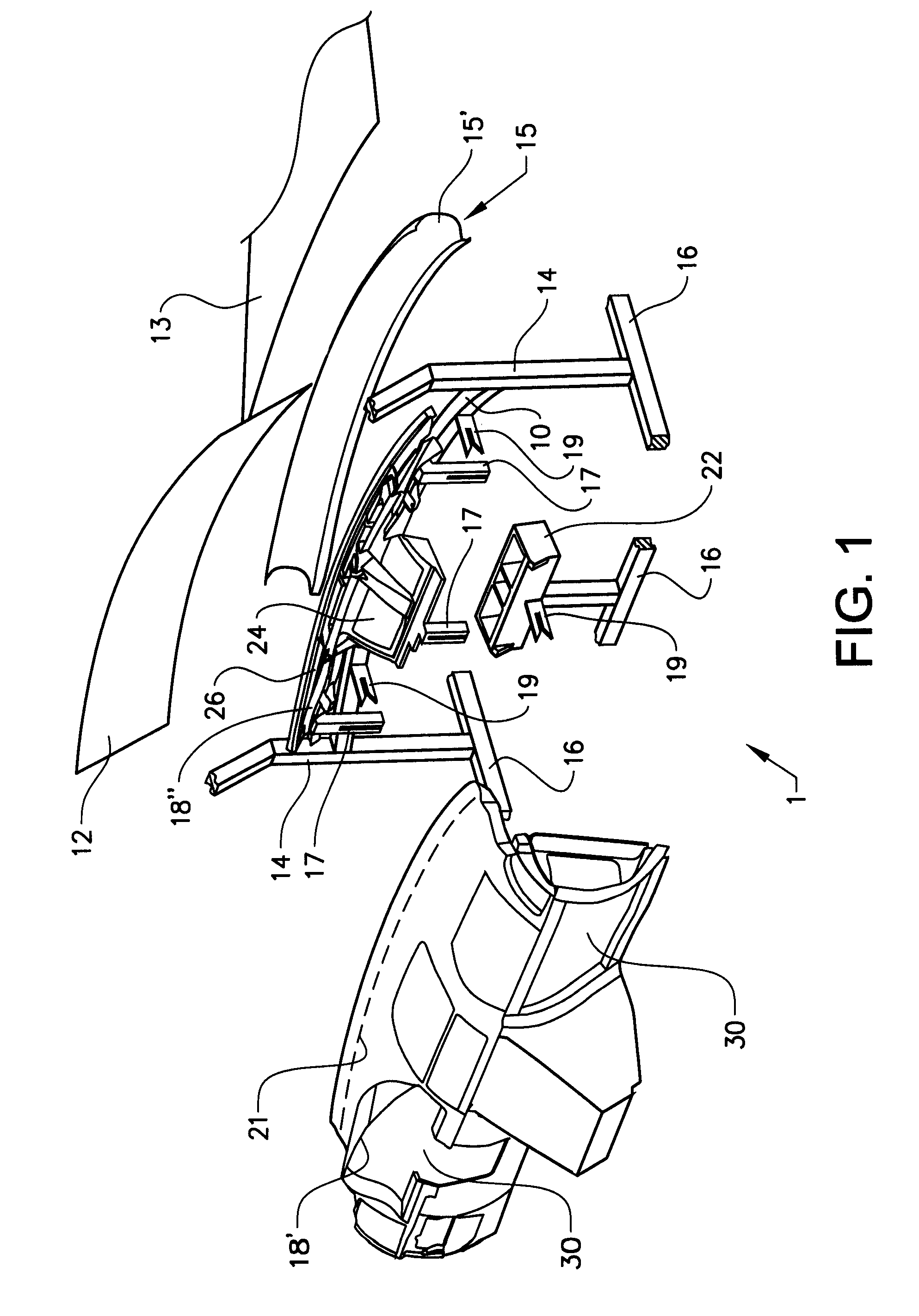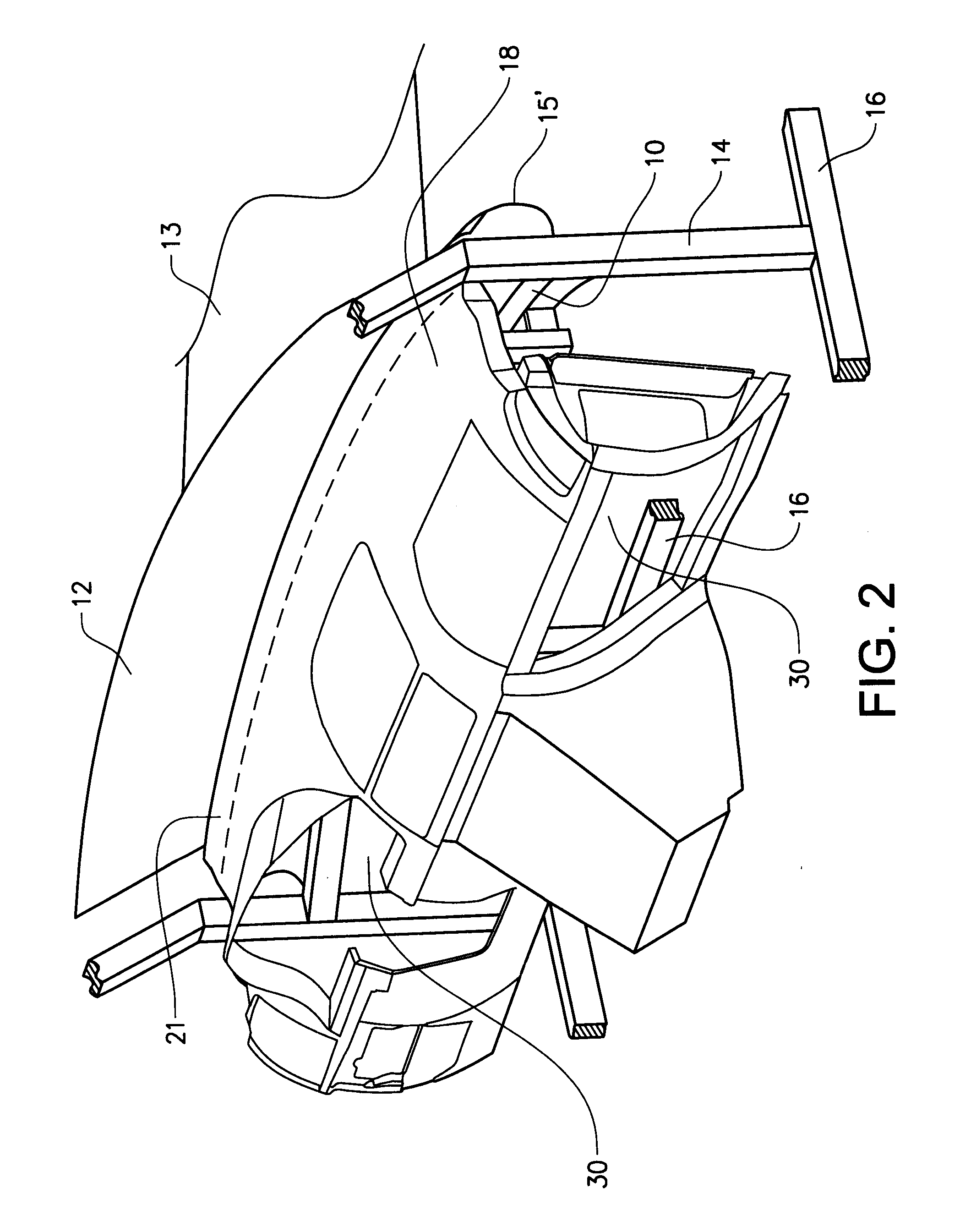Vehicle front interior structure
a technology for interior structure and vehicle, applied in the direction of vehicular safety arrangments, roofs, pedestrian/occupant safety arrangements, etc., can solve problems such as severe injuries, reduce the stiffness of the structure, increase the braking distance, and slow down the deceleration of objects
- Summary
- Abstract
- Description
- Claims
- Application Information
AI Technical Summary
Benefits of technology
Problems solved by technology
Method used
Image
Examples
Embodiment Construction
)
[0022]FIG. 1 schematically shows in an exploded perspective view a vehicle front interior structure 1 according to a preferred embodiment of the invention. A cross member 10 extends transversely at some distance below a windshield 12 between the A-pillars 14 of a schematically shown vehicle body 16. The cross member 10 provides structural rigidity and support to the vehicle and it also supports a windshield supporting member 15 comprising a curved flange 15′. A hood 13 is also shown in FIG. 1. The front interior structure 1 further comprises a first, outer, dashboard member 18′; a second dashboard member 18″ forming main air flow ducts 24 and air flow distribution ducts 26; and a heating, ventilating and air conditioning unit (HVAC-unit) 22. The HVAC-unit 22 is principally a solid box containing air treatment equipment. The main ducts 24 lead the treated (e.g. heated) air from the HVAC-unit 22 in a diagonal forward / upwards direction to the distribution ducts 26 arranged in parallel...
PUM
 Login to View More
Login to View More Abstract
Description
Claims
Application Information
 Login to View More
Login to View More - R&D
- Intellectual Property
- Life Sciences
- Materials
- Tech Scout
- Unparalleled Data Quality
- Higher Quality Content
- 60% Fewer Hallucinations
Browse by: Latest US Patents, China's latest patents, Technical Efficacy Thesaurus, Application Domain, Technology Topic, Popular Technical Reports.
© 2025 PatSnap. All rights reserved.Legal|Privacy policy|Modern Slavery Act Transparency Statement|Sitemap|About US| Contact US: help@patsnap.com



